Coronavirus: How do NI Covid numbers look as restrictions ease?
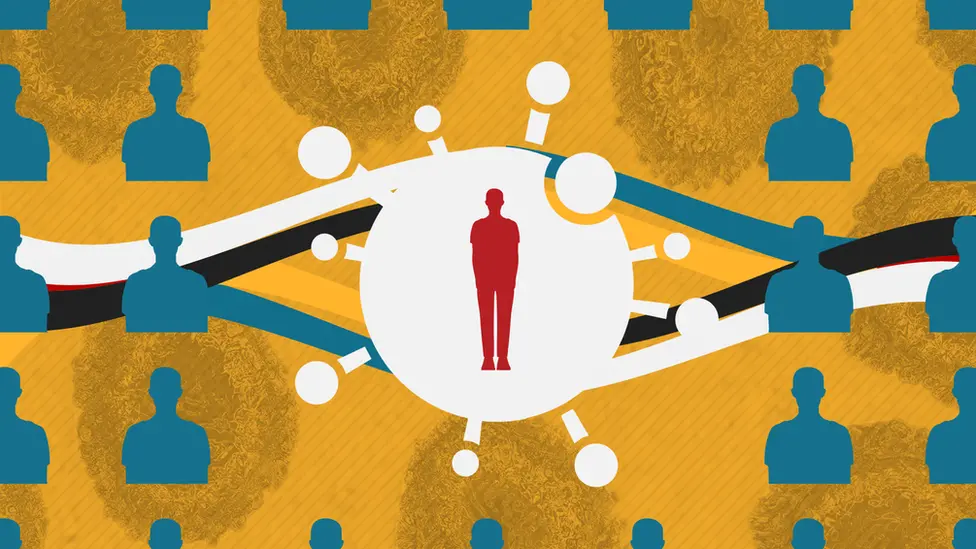 BBC
BBCThe Northern Ireland Executive has announced that lockdown restrictions will begin lifting from 23 April when businesses like barbers and hairdressers reopen again.
The mantra throughout the lockdown period - for all devolved regions and the UK government - has been "data, not dates" when it came to decisions to unlock.
So what does the data tell us?
The death rate has fallen slightly over the last week or so.
The number of people in hospital with the virus has continued to fall.
Some numbers have risen over the past week, notably case numbers and infection rates.
However, these rises come in the context of a dip in the number of people being tested over Easter - and they're still much lower than they were a few weeks ago
Infection rates
Infection rates have risen over the past week. But let's put that in context.
Yes, we're seeing more people test positive than this time last week. Yes, the overall infection rate in Northern Ireland has risen. And yes, the reproduction (R) number is estimated to be higher than it was seven days ago.
But - and it's an important but - these rises have been small and the overall numbers involved remain lower than they were a few weeks ago.
The other thing worth bearing in mind is that some further rise in infection rates is virtually inevitable as we start to unlock.
The latest data from the UK government - for the seven days up until 11 April - indicates that Northern Ireland has the highest infection rate in the UK at 38.1 per 100,000 population.
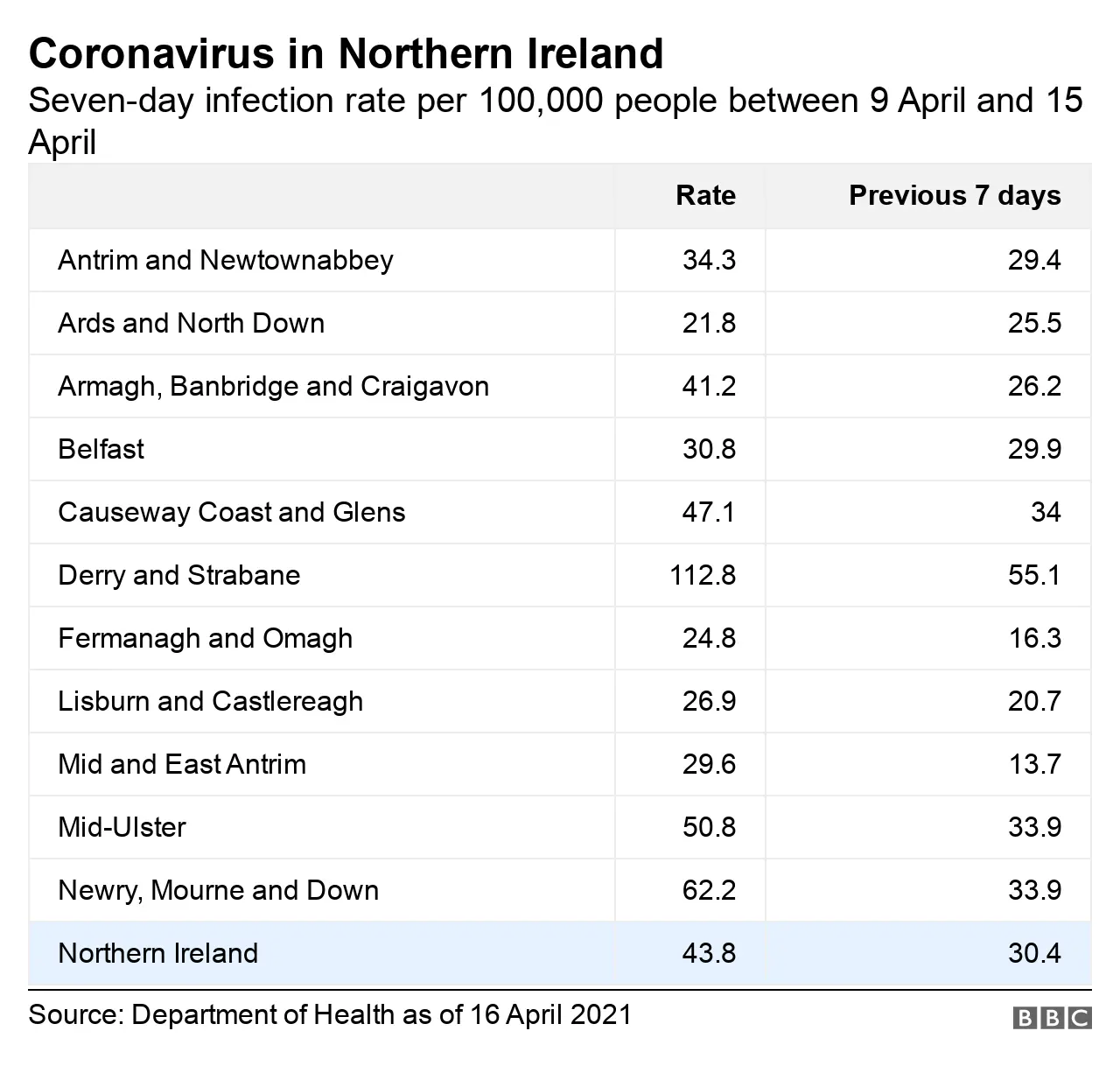
And more recent figures from the Department of Health suggest this rate has continued to rise.
The increases are modest and the current infection rate is similar to what it was at the end of March.
Figures from the BBC's Data Unit for the seven days up until 10 April reveal that not one of the UK's 377 local council areas had an infection of 100 cases per 100,000 population.
Mansfield District Council (near Nottingham) had the highest rate in the UK at 99 cases per 100,000 population.
The same BBC data records Derry City and Strabane District Council as having the highest infection rate in Northern Ireland - at 81 cases per 100,000 population.
Again, Department of Health figures indicate Derry and Strabane's rate is continuing to rise.
Testing
While compared to a week ago, the number of people testing positive for the virus in Northern Ireland has increased, the number of people getting tested has also risen.
This means that the positivity rate is actually quite good.
Over the past week, about one in every 55 people tested has received a positive result - equivalent to 1.79% positivity.
The previous week those same figures were one in 37, or 2.66%.
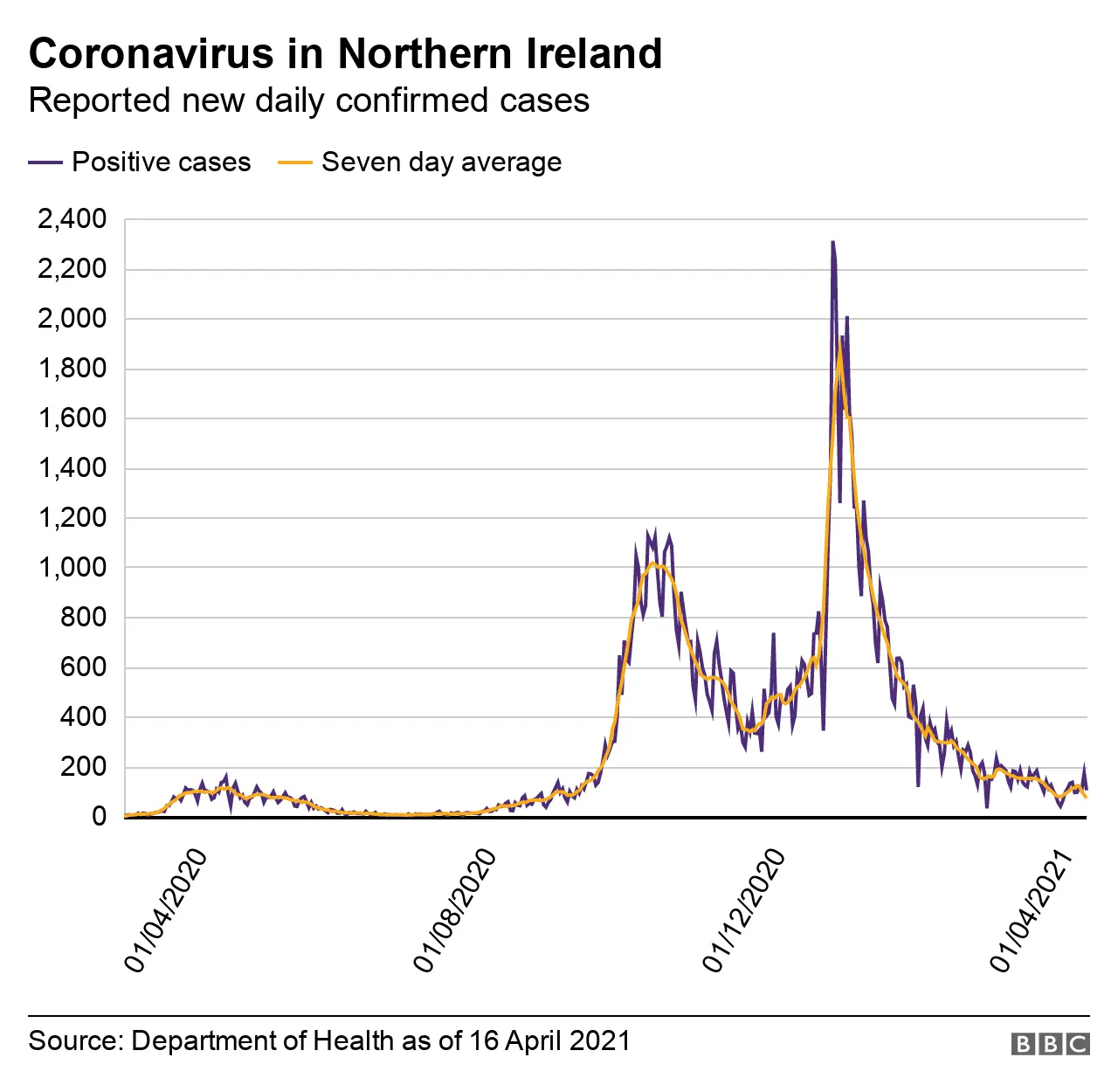
For context, it's worth remembering that at the height of the winter surge more than one in four people tested had the virus.
The estimated R number has increased from between 0.4 and 0.6 to between 0.95 and 1.4.
The easiest way to think of the R number is that a value of 1 or more means the virus is spreading; lower than 1 indicates the virus is contracting.
On the face of it, this may look alarming. However - as the first minister explained to assembly colleagues during the week - because case numbers are lower, the R number's reliability is affected.
This accounts for the wider range in the estimated R number this week.
Vaccinations
Almost half of the UK's entire population has now received a dose of a Covid-19 vaccine. And Northern Ireland's vaccination programme has continued to do well.
The latest figures, up until 15 April, show that 850,103 people in Northern Ireland have had a first dose of a vaccine.
This is around 45% of Northern Ireland's overall population, and almost 60% of the adult population.
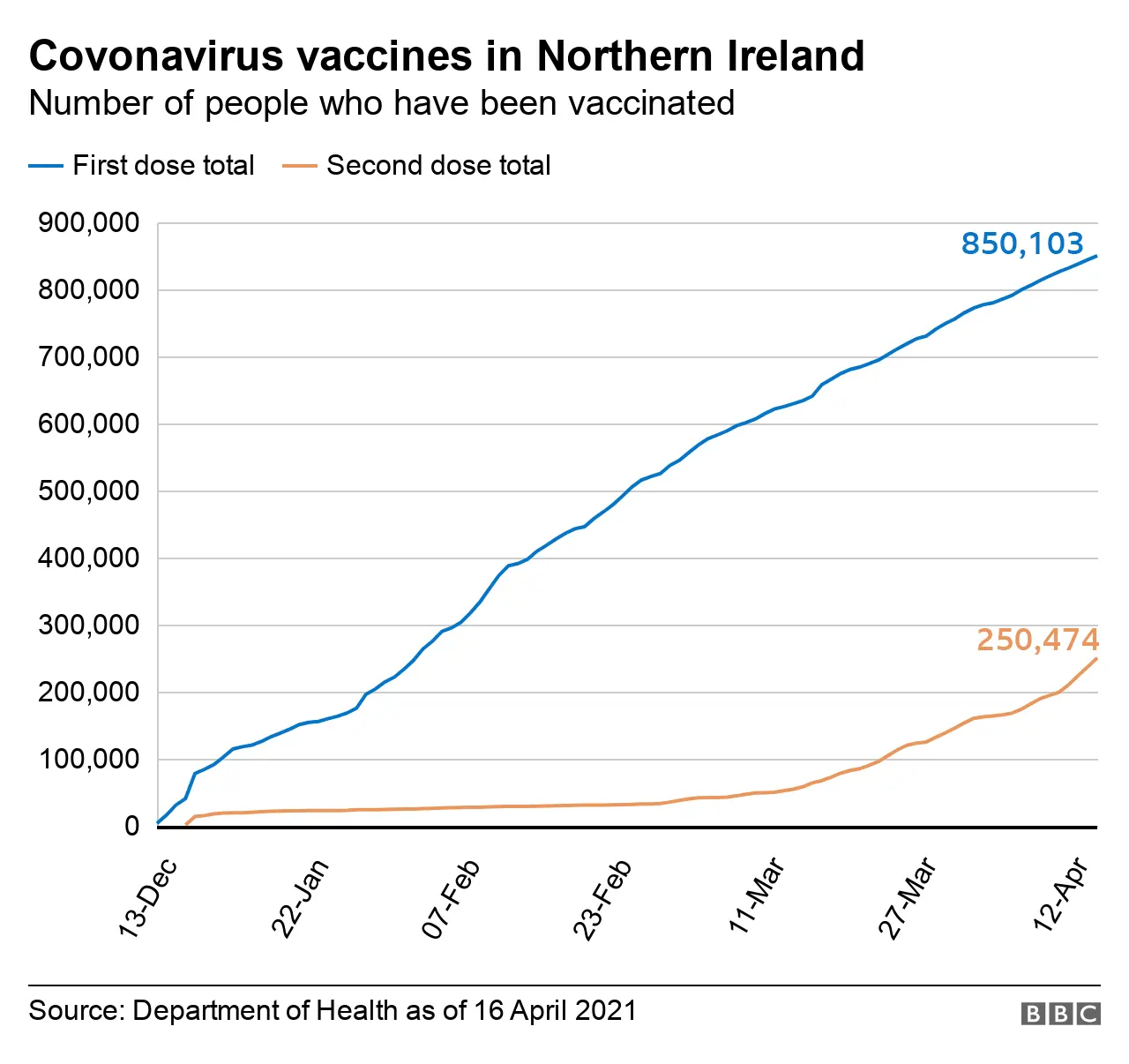
Northern Ireland still lags behind the rest of the UK for first doses, but is far ahead of the Republic.
The following figures are based on the percentage of overall population to have received at least one dose of Covid-19 vaccine:
- UK - 49.2%
- England - 48.9%
- Scotland - 50.4%
- Wales - 53.0%
- Northern Ireland - 44.8%
- Republic of Ireland - 15.8%
The gap between Northern Ireland and the rest of the UK, in terms of percentage of population to have received a first dose of vaccine, has been widening slowly.
A seven-day rolling average indicates that the number of first dose vaccines that have been given out each day in Northern Ireland has been fairly constant - between 6,000 and 6,500.
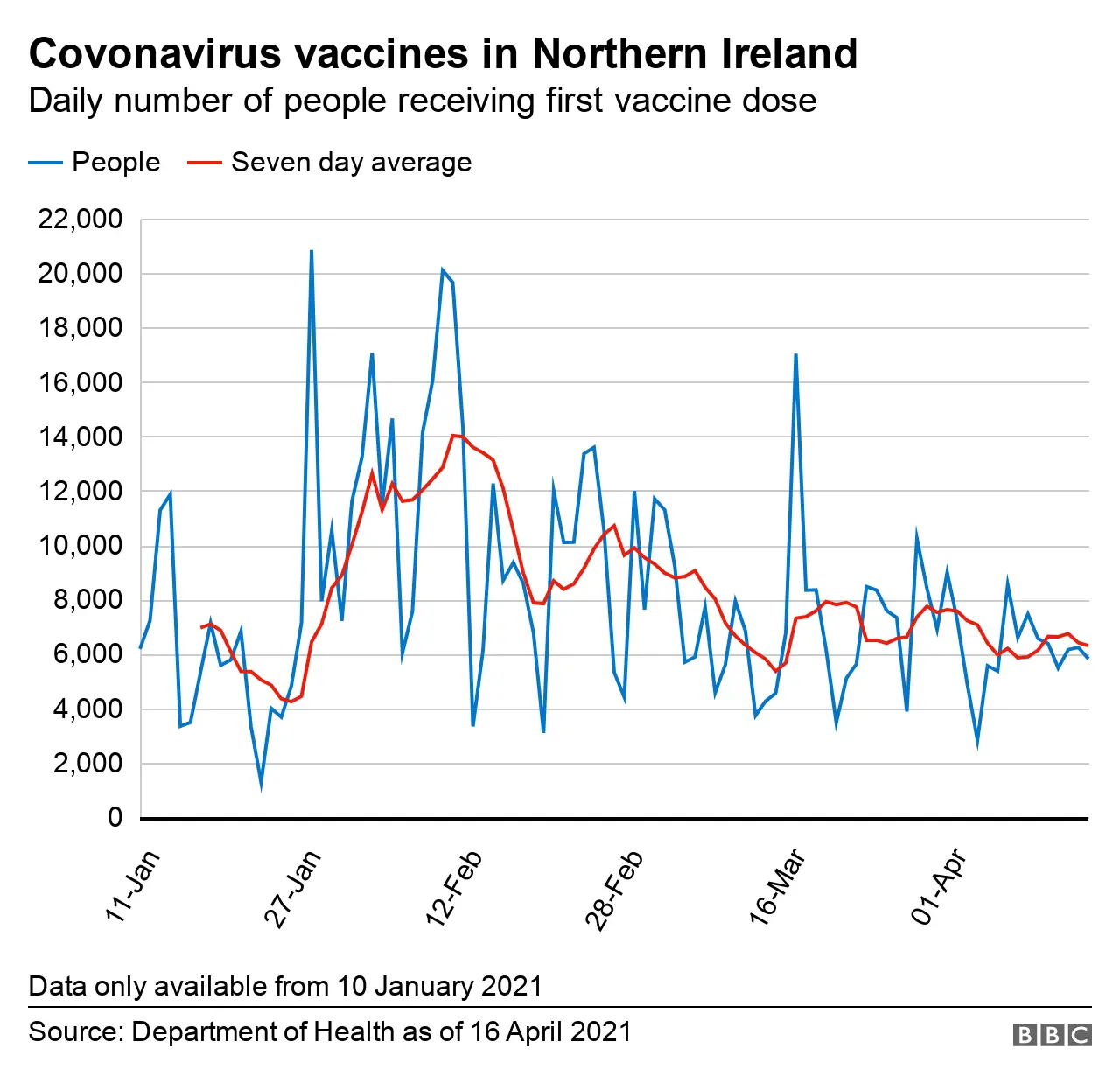
The vaccine rollout hasn't sped up in terms of first doses despite more age groups being called. Neither has it slowed down.
Given that vaccine supply is expected to be limited until the end of the month, this isn't a big surprise.
The other thing that is almost certainly affecting first dose rollout is second dose rollout.
There was a considerable increase in the numbers of people getting their second doses in the latter half of this week.
Of the 850,000 people in Northern Ireland who have had a vaccine dose, more than 250,000 have already received their second dose.
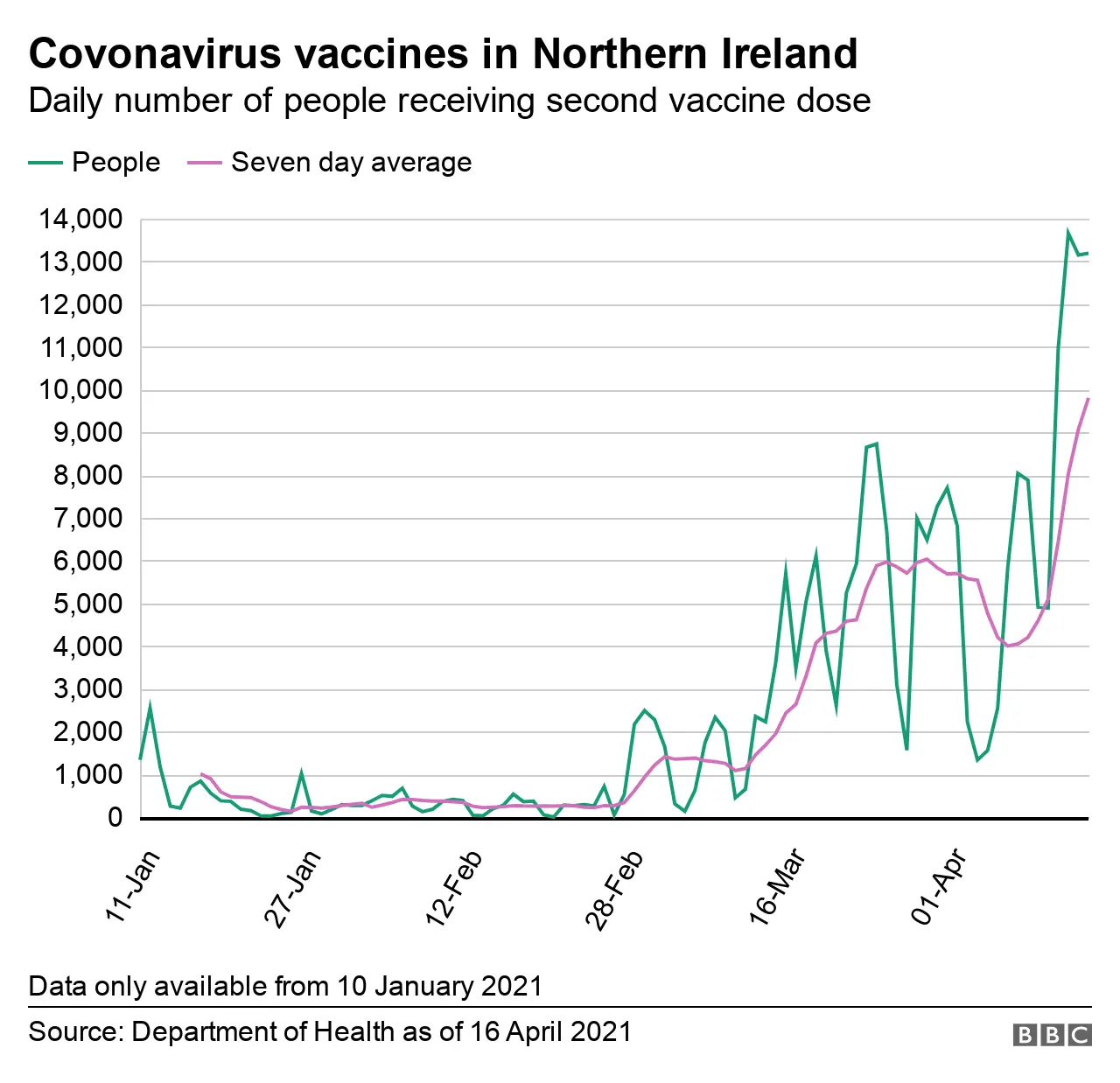
We can measure the performance of how second-dose vaccines are being delivered in two different ways - the percentage of the overall population to have received a second dose; or the percentage of people who have had a first dose, and have also had their second dose.
Northern Ireland is doing very well in terms of second doses by either of these measures.
The increased gap between the vaccine rollout on both sides of the border is undoubtedly a concern.
Along with lockdown measures, the vaccination programme in Northern Ireland has had a marked impact on case numbers; infection rates; hospitalisations; and - ultimately - deaths.
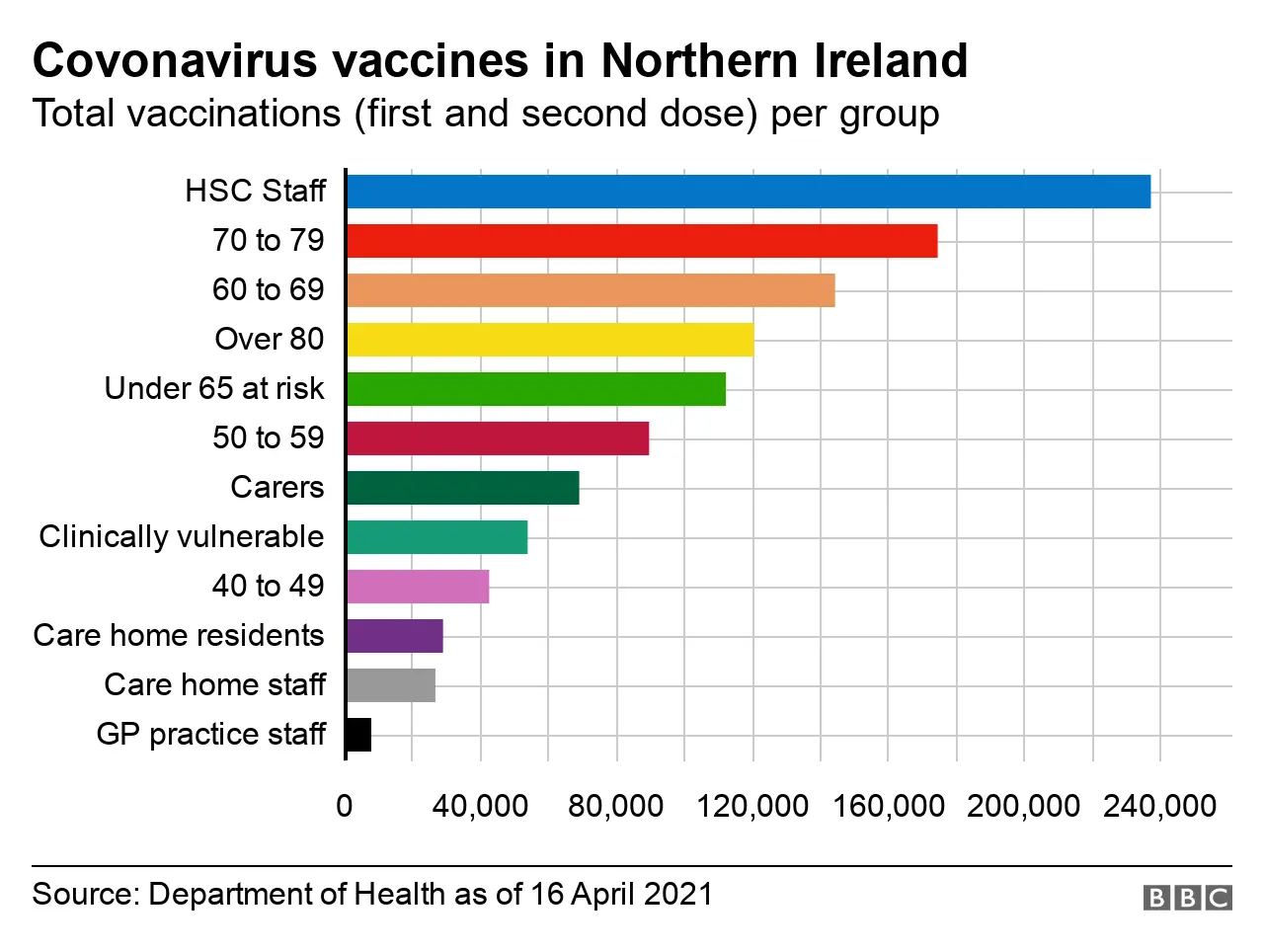
The Republic has yet to see similar benefits in its reported figures.
The performance of vaccination programmes in EU states is broadly similar to the Republic's.
The Irish government has said that the speed of vaccine rollout will increase and has targeted the end of June to have given 80% of adults their first dose.
If this happens, it will be an added layer of protection for Northern Ireland.
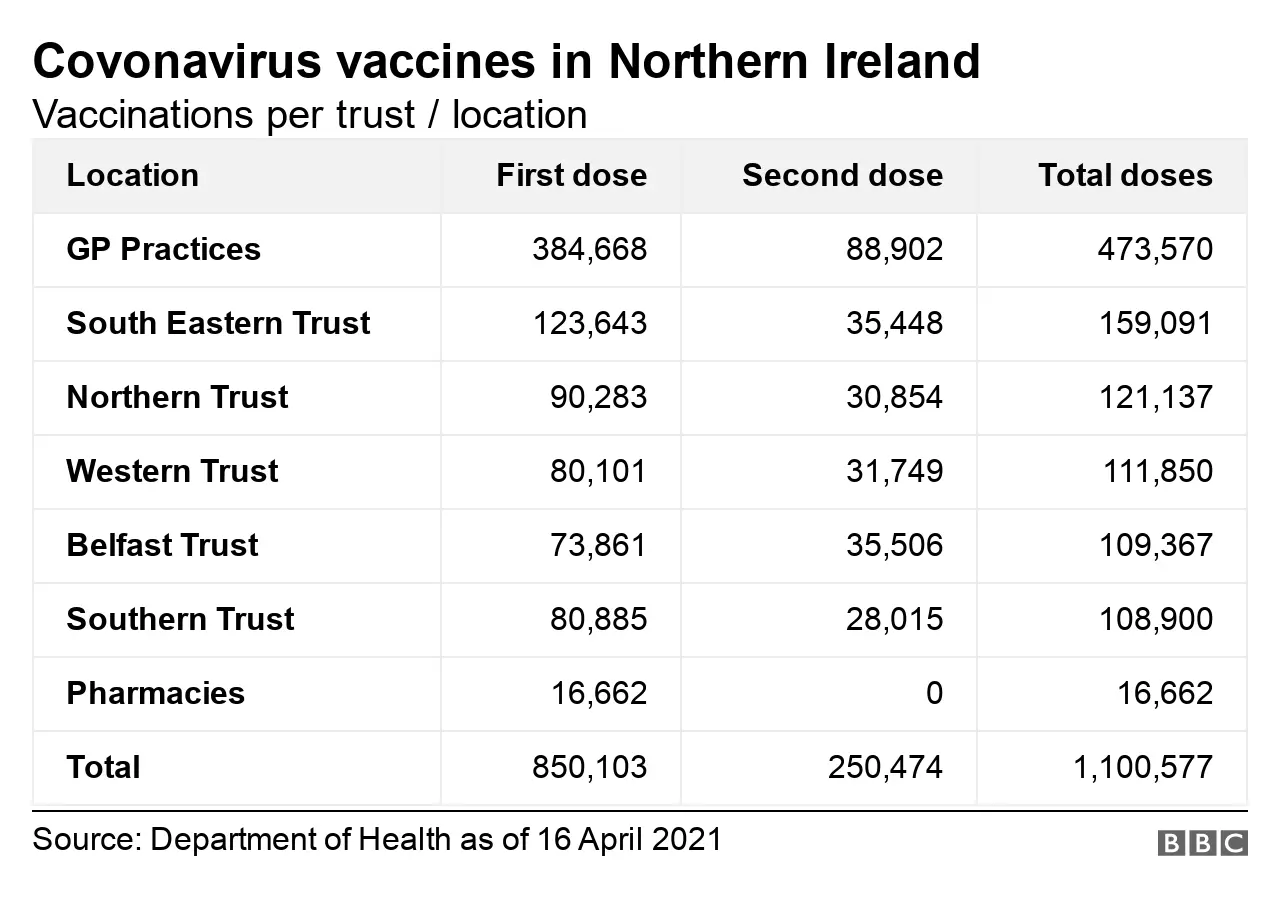
Deaths
Northern Ireland saw fewer deaths reported in the past week than in the previous week.
However, the rolling seven-day average has been low and more or less static for the past month - at about one expected death per day.
When population size is applied, Northern Ireland's death rate is slightly greater than Wales and Scotland, but lesser than England's - but it must be emphasised that the death rates for all the UK nations have fallen considerably and remain low.
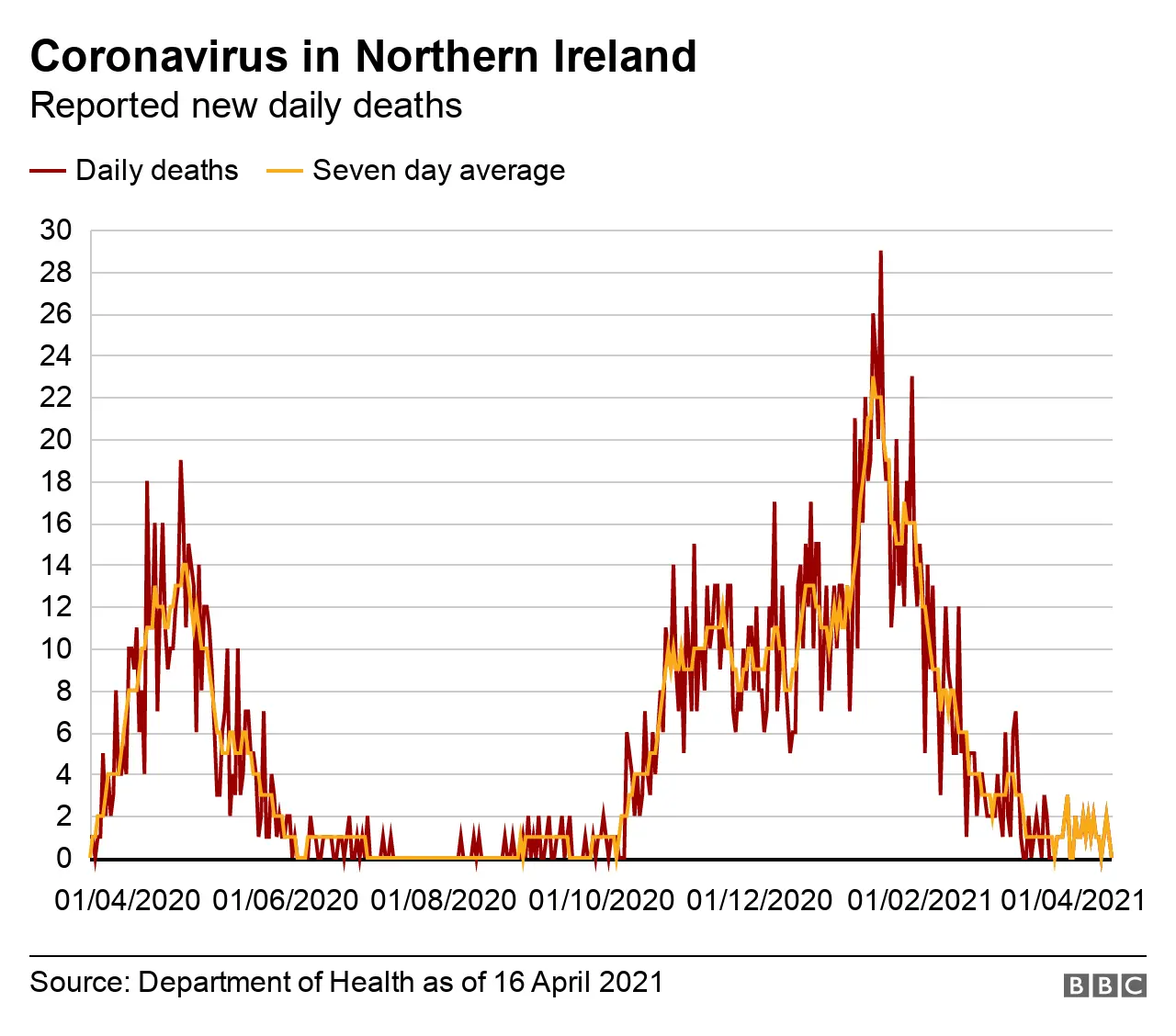
Comparing deaths by positive cases shows that Ireland has not been affected by deaths to the same level as Britain:
- England - one in 34 cases has resulted in fatality
- Scotland - one in 29 cases has resulted in fatality
- Wales - one in 38 cases has resulted in fatality
- Northern Ireland - one in 55 cases has resulted in fatality
- Republic of Ireland - one in 50 cases has resulted in fatality
This has been an ongoing trend for some time.
The number of death certificates mentioning the virus - as reported by Nisra (Northern Ireland Statistics and Research Agency) - fell in the week up until 8 April.
Hospitalisations
The number of people in Northern Ireland's hospitals with the virus continues to fall.
This has been on a steady downward trend since the end of January and is a good indicator of the vaccination programme having a really positive effect.
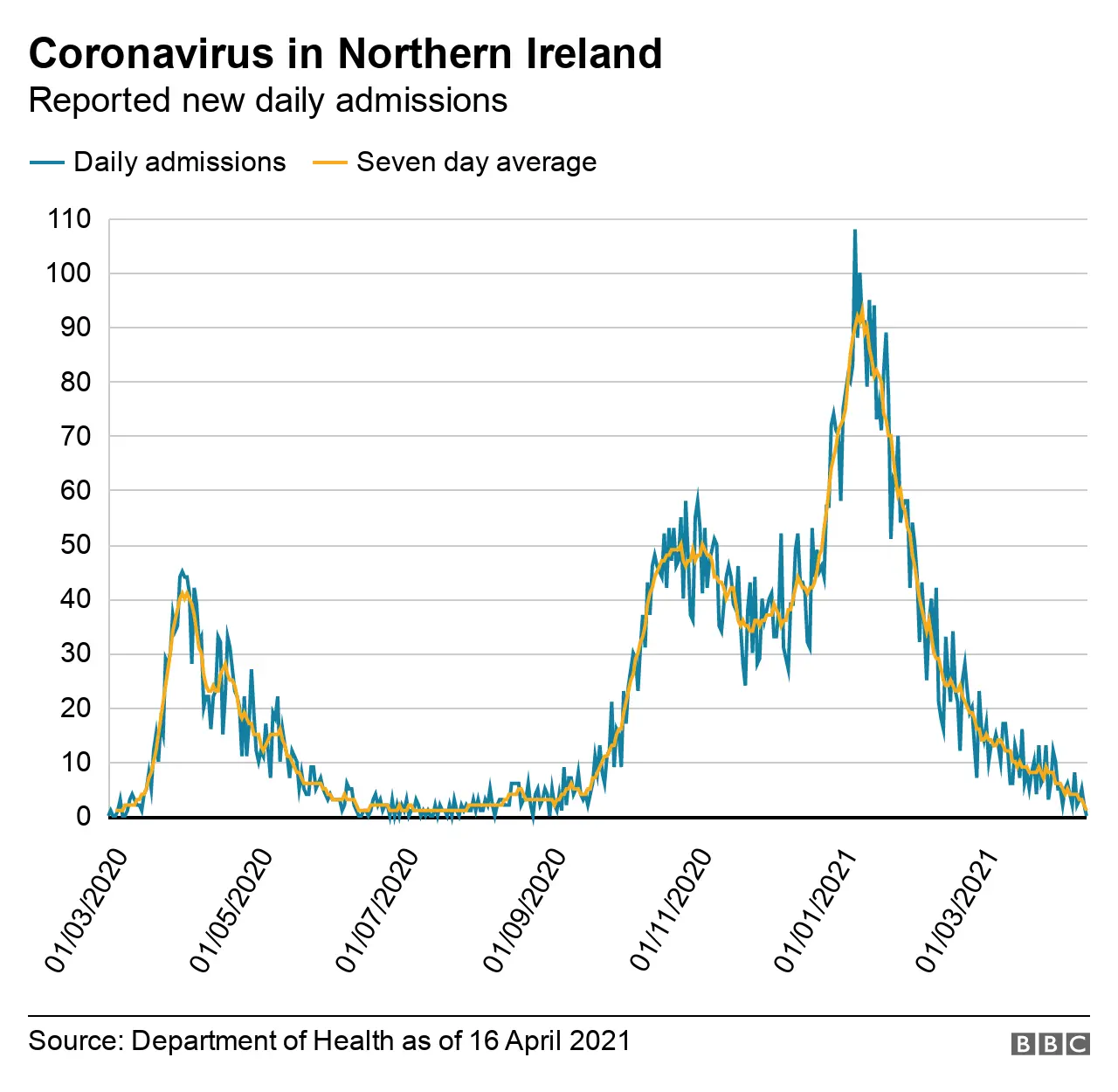
Latest figures record 69 inpatients with the virus, nine of whom are receiving intensive care.
Intensive Care Unit (ICU) occupancy is a good measure of how Northern Ireland is faring in its battle against the virus.
And those numbers have been fairly steady for almost a fortnight.
There's a good chance that we will continue to see a drop in the number of inpatients with Covid-19, thanks to an ongoing low admission rate.
This drop is likely to be steady, but quite slow
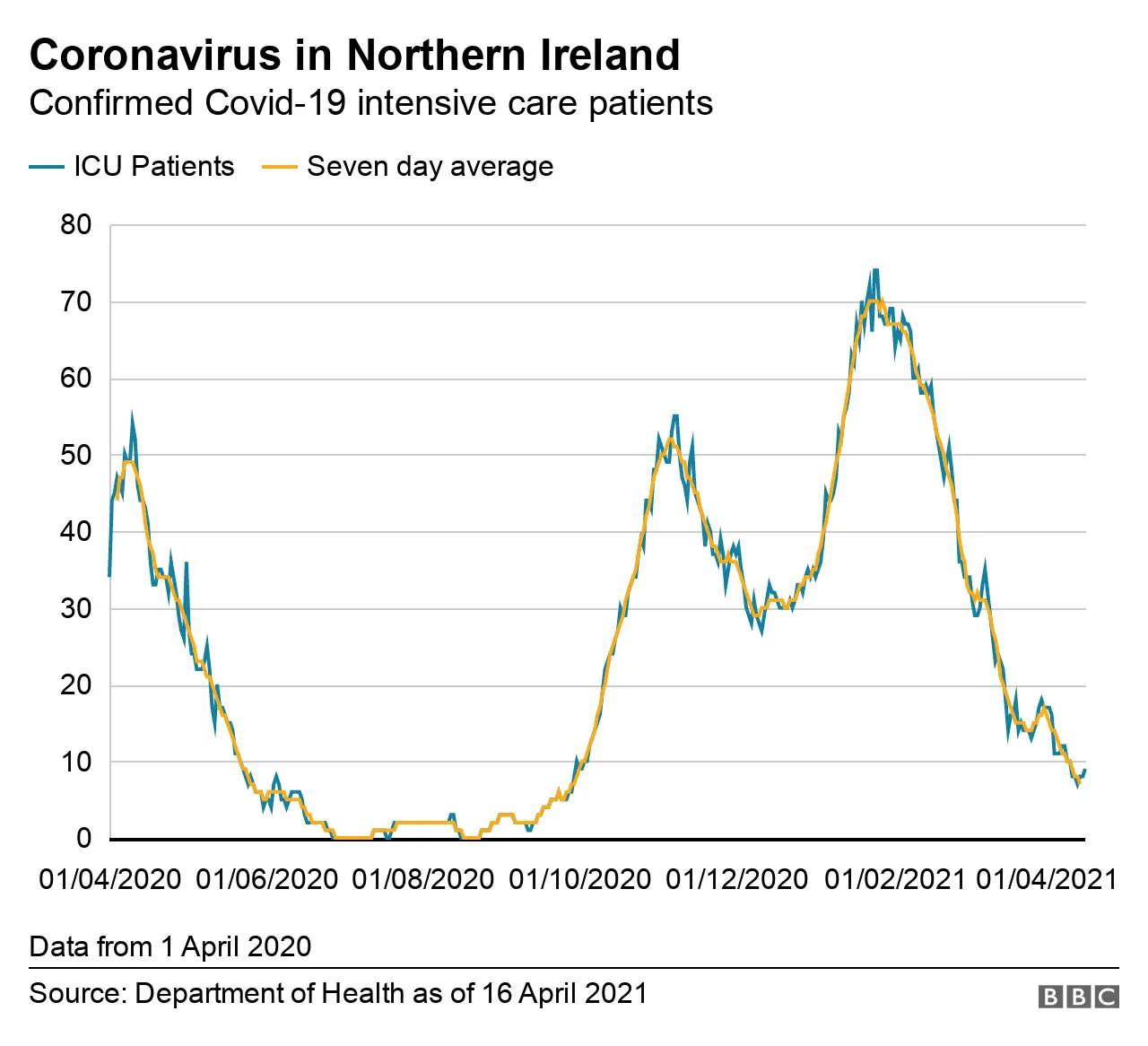
And these falling numbers don't necessarily mean our medics and other health service staff are not under pressure.
Nearly all the beds in Northern Ireland's hospitals are occupied and, at times during the past week, there have been more patients requiring hospitalisation than we have beds to put them.
This is a reminder of all the other non-Covid issues the health system still has to deal with.
